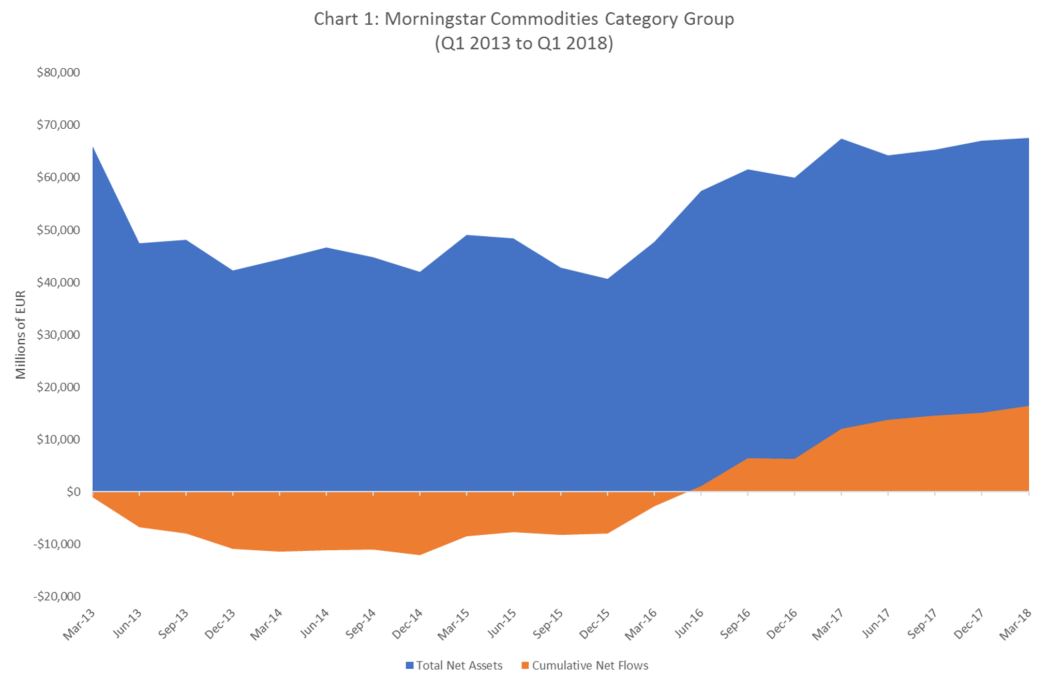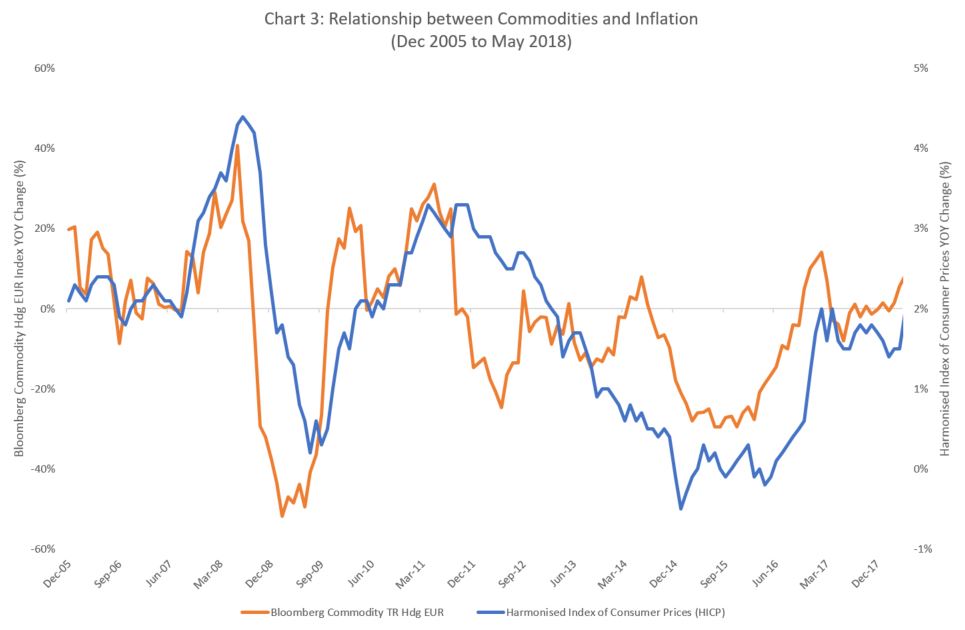Commodities may be poised for a comeback
Commodities have been the black sheep of many multi-asset portfolios. Ryan Katona, Consulting Analyst, explains why that may be changing.
Commodities: the post-GFC outlier
Most risk assets have enjoyed gains
Since the Great Financial Crisis (GFC), most risk assets have delivered a relatively enjoyable investment experience. Developed market equities (MSCI World NR EUR Index) achieved annualised returns of +14.8% from the first month after the market bottom, 1 April 2009 to 30 June 2018. Emerging market equities (MSCI EM NR EUR Index) also impressed with double-digit annualised returns of +11.2%. REITs (FTSE EPRA/NAREIT Developed NR EUR Index) results have been notable as well, with annualised returns of +15.9%.
The black sheep
One asset class that hasn’t participated in this lengthy bull market, however, is commodities – which provides economic exposure to natural resources (such as oil, gold, timber) and raw materials (for example wheat, corn, pork bellies) typically used to produce many products around the world. Commodities (Bloomberg Commodity TR EUR Index) have struggled, delivering a negative annualised return of -0.8% from 1 April 2009 to 30 June 2018.
The 2015 low
It should not come as a surprise then, that many investors have decided to look elsewhere for returns within their portfolio’s allocation. At the end of the first quarter of 2013, total net assets in European open-end mutual funds and ETFs stood at approximately EUR 66 billion. Less than two years later — by the end of 2014 — that figure stood at EUR 42 billion. In that short time period, EUR 12 billion in assets exited commodities funds. While investors have ventured back into the asset class after the 2014 low, they still haven’t reached their previous high-water mark again.
This negative sentiment toward commodities has not always existed. In fact, if you look back at the six years prior to 2013, the Morningstar commodity category group gathered over EUR 40 billion from the first quarter of 2007 to the fourth quarter of 2012, with total net assets in the asset class peaking at over EUR 71 billion in the third quarter of 2012:
We still believe Commodities have an important role within a multi-asset portfolio
Despite the performance challenges the asset class has faced during the current market cycle, we at Russell Investments maintain our strategic belief in commodities as part of a well-diversified multi-asset portfolio.
So, in addition to the strong outlook for many commodity constituents at this point in the market cycle, we thought it may also be helpful to revisit the rationale for commodities from a strategic allocation perspective, which includes the following key points:
- Commodities’ diversification benefits
- Commodities’ role as a potential hedge against unexpected inflation.
Diversification benefits
While traditional asset classes like stocks and bonds may be the starting point for most investors’ portfolios, real assets like commodities, real estate, and infrastructure have the potential to add valuable diversification benefits to an overall portfolio.This can be illustrated by examining historical correlations between the returns of the Bloomberg Commodity Index relative to the returns of other traditional asset classes:
| Historical Correlations of Bloomberg Commodity Index | ||
|---|---|---|
| Asset Class | Trailing 10 years | Trailing 15 years |
| Developed Markets Equity | 0.69 | 0.56 |
| Emerging Markets Equity | 0.73 | 0.63 |
| Global Aggregate Bond | 0.47 | 0.37 |
Source: Morningstar Direct, June 30th, 2018. Developed Markets Equity = MSCI World NR EUR; Emerging Markets Equity = MSCI EM NR EUR; Global Aggregate Bond = Bloomberg Global Aggregate Bond TR EUR; Bloomberg Commodity Index = Bloomberg Commodity TR EUR.
As the table above illustrates, commodity returns have had lower positive correlations historically to traditional asset classes. For example, over the past 15 years, commodity returns have a lower positive relationship with developed market equity (+0.56), emerging market equity (+0.63), and global aggregate bond returns (+0.37). Contrast that to developed and emerging market equity, for example, whose returns have been strongly correlated over the past 15 years (+0.86) as of 30 June 2018.
Considering the recent volatility experienced by both equities and bonds, along with developed equity markets remaining relatively expensive despite these recent results, maintaining an allocation to asset classes with low correlations could potentially provide the cushion clients are looking for should volatility persist in capital markets moving forward.
Relationship with Inflation
Inflation is another reason a strategic allocation to commodities may benefit investor portfolios
Consider the chart below, which compares the rolling one-year returns of the Bloomberg Commodity Index relative to the year-over-year change in the Harmonised Index of Consumer Prices (HICP) over the past 13 years ending 31 May 2018. The HICP tracks the changes in prices of consumer goods and services, including food and energy, serving as a broad measure of inflation given the commodity exposures represented in the Bloomberg Commodity Index. As you can see, there is a clear historical relationship between the change in prices of commodities and the returns of the commodity asset class:
Why does the relationship between commodities and inflation matter right now?
Why does the relationship between commodities and inflation matter right now?
While it is true that since the Great Financial Crisis inflation has been considerably low, the year-over-year percentage change in HICP has been trending up since the end of 2016. According to Eurostat, the HICP stood at 2.0% for the month of May, a level not reached since April of 2017.
From a historical perspective, this is a critical development. As you can see below, commodities have historically performed well during inflationary environments, averaging a 6.2% return per year when annual inflation readings were at least 2.5%:
Further, many feel that current geopolitical events, like potential trade wars, and tensions in the Middle East that could disrupt oil supply globally, could create a windfall for inflation and commodity prices going forward.
A rewarding environment for commodities looks possible
While the commodities asset class has struggled since the Great Financial Crisis relative to the other major asset classes, recent geopolitical events combined with a late-cycle backdrop have created a potentially rewarding technical environment for commodity returns. Further, the strategic rationale for maintaining an allocation to commodities – diversification and a potential hedge against inflation – remains as relevant as ever. For these reasons, Russell Investments believes the asset class still deserves a strategic allocation within a diversified, multi-asset portfolio.



